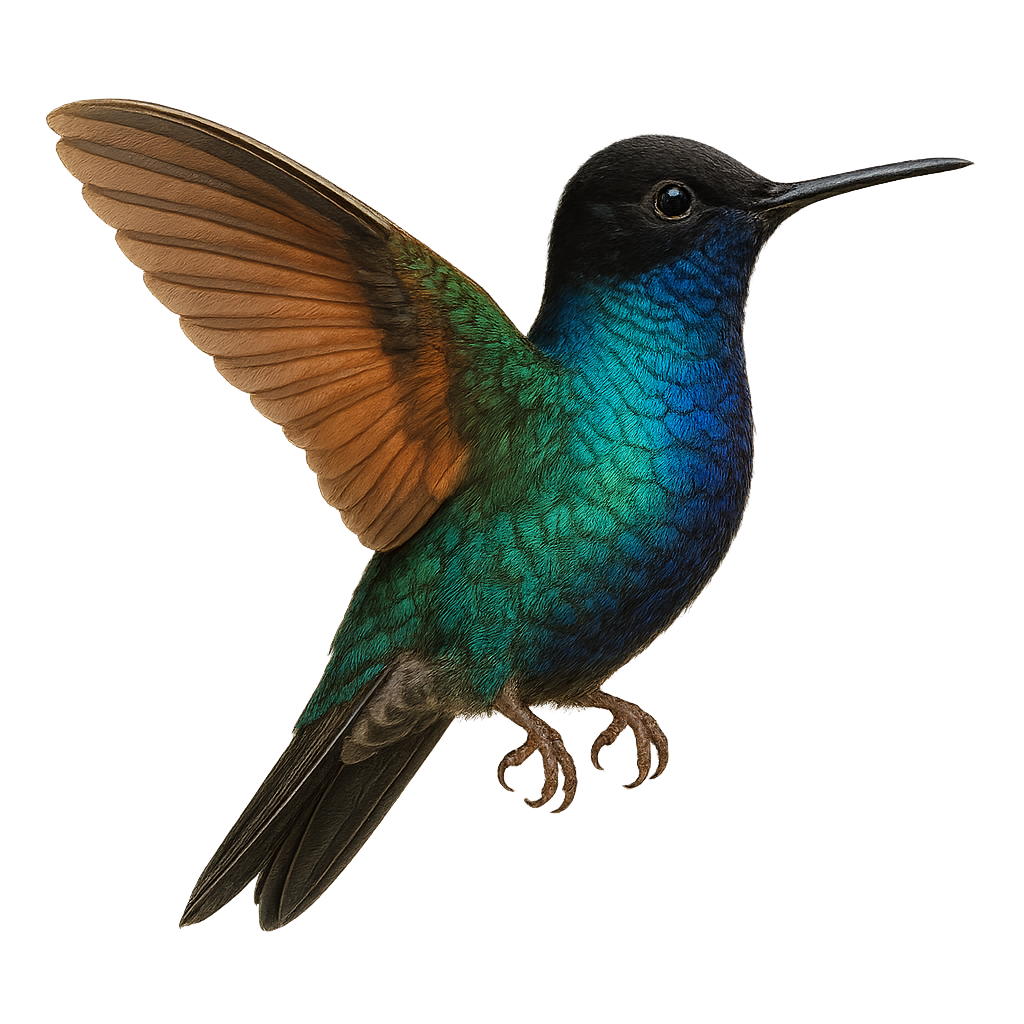Your wildlife photography guide.
Explore the velvet-purple coronet in detail, study its behavior, prepare your shots.
Where to observe and photograph the velvet-purple coronet in the wild
Learn where and when to spot the velvet-purple coronet in the wild, how to identify the species based on distinctive features, and what natural environments it inhabits. The WildlifePhotographer app offers tailored photography tips that reflect the velvet-purple coronet’s behavior, helping you capture better wildlife images. Explore the full species profile for key information including description, habitat, active periods, and approach techniques.
Velvet-purple Coronet
Scientific name: Boissonneaua jardini

IUCN Status: Least Concern
Family: TROCHILIDAE
Group: Birds
Sensitivity to human approach: Suspicious
Minimum approach distance: 5 m
Courtship display: October to November
Incubation: 15-17 jours
Hatchings: October to December
Habitat:
Humid forests, forest edges, mountainous areas
Activity period :
Primarily active during the day, with peak activity in the morning and late afternoon.
Identification and description:
The Velvet-purple Coronet, or Boissonneaua jardini, is a captivating hummingbird known for its striking plumage and agile movements. This hummingbird features a velvety purple plumage on its back and wings, contrasting with a metallic green belly. Males and females are similar, though females are slightly smaller. They inhabit the humid forests of the Andes, mainly in Colombia and Ecuador, where they feed on nectar and insects. Their rapid and precise flight allows them to navigate easily between flowers. The Velvet-purple Coronet plays a crucial role in pollinating local plants. Although generally solitary, these birds can be seen in groups around abundant food sources.
Recommended lens:
400 mm – adjust based on distance, desired framing (portrait or habitat), and approach conditions.
Photography tips:
To photograph the Velvet-purple Coronet, opt for a 400mm or longer telephoto lens to capture details without disturbing the bird. Look for areas where flowers are abundant, as these birds are often drawn to nectar sources. Use a fast shutter speed to freeze the rapid movement of their wings. Natural morning or afternoon light provides the best conditions to capture the vibrant colors of their plumage. Be patient and discreet to avoid scaring these suspicious birds.
The WildlifePhotographer App is coming soon!
Be the first to explore the best nature spots, track rutting seasons, log your observations, and observe more wildlife.
Already 1 430 wildlife lovers subscribed worldwide

